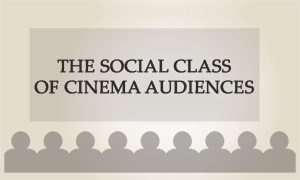 In a passing comment in last week’s article on the effect of age on cinema-going, I mentioned that the same exit polls measured the social class of cinema audiences. I asked readers to get in touch if you wanted me to share the data and a number of you did. I don’t have a great deal of information on the topic, but what I do have is below.
In a passing comment in last week’s article on the effect of age on cinema-going, I mentioned that the same exit polls measured the social class of cinema audiences. I asked readers to get in touch if you wanted me to share the data and a number of you did. I don’t have a great deal of information on the topic, but what I do have is below.
The original exit poll data comes via cinema advertisers Pearl and Dean’s microsite which I matched up with UK box office figures and split by genre. In total, I was able to look at 662 movies released in UK cinemas between 2005 and 2016.
The social class of cinema audiences
The polls use the class classification system developed by the National Readership Survey (NRS) over 50 years ago. The NRS survey splits everyone in the UK into one of six ‘social grades‘:
- A – Upper middle class. Higher managerial, administrative or professional.
- B – Middle class. Intermediate managerial, administrative or professional
- C1 – Lower middle class. Supervisory or clerical and junior managerial, administrative or professional
- C2 – Skilled working class. Skilled manual workers
- D – Working class. Semi-skilled and unskilled manual workers
- E – non-working. Casual or lowest grade workers, pensioners, and others who depend on the welfare state for their income.
In 2008, the UK population was made up of 4% grade As, 23% grade B, 29% grade C1, 21% grade C2, 15% grade D and 8% grade E. The Pearl and Dean data groups together grades A and B, and also grades D and E.
The UK cinema audience is made up of a larger share of people in the higher social classes than the UK population.
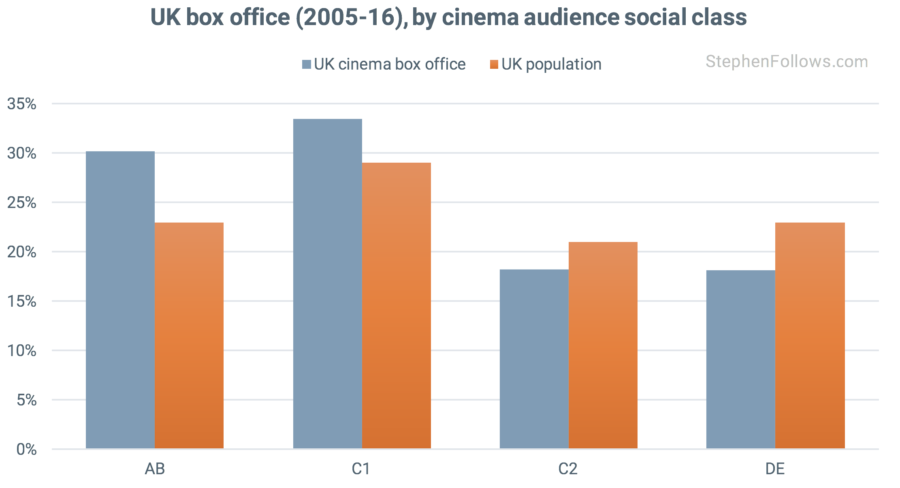
Social class of cinema audiences by genre
Grades D and E are underrepresented in UK cinema audiences for all genres apart from horror. Drama has the biggest gap, with 16% of drama audiences falling within social grades D and E, compared with 23% of the UK population. This pattern is carried through to the other grades, with Drama having the greatest percentage of A and B people (33%), and horror having the lowest (21%).
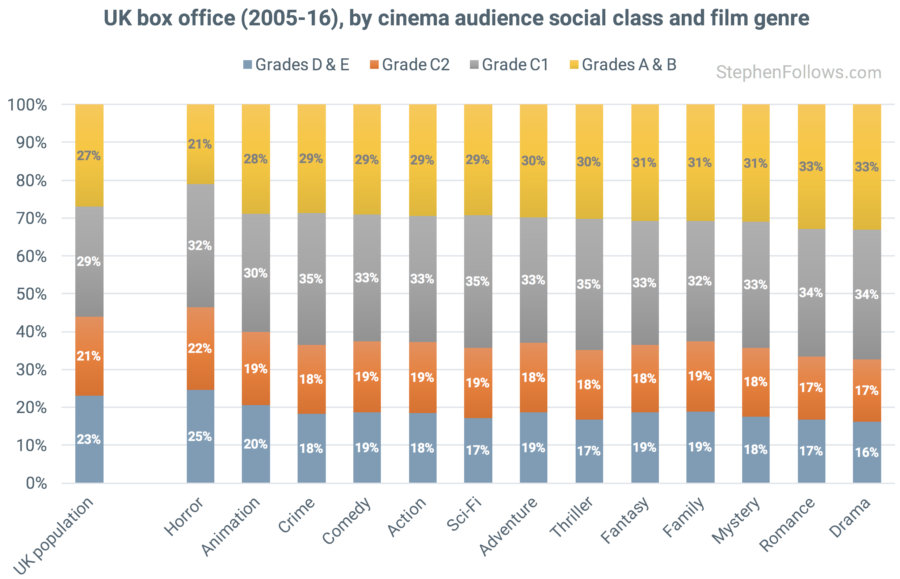
Epilogue
 Class is a very complicated and loaded topic in the UK. Our class hierarchy has played such an important role in our history that it’s hard to talk about it without offending someone. Even debates about modern Britain often end up in proxy class wars (Corbyn Vs Cameron/May, fox hunting, etc). Therefore, I am slightly apprehensive about presenting data which appears to wade into this emotional topic.
Class is a very complicated and loaded topic in the UK. Our class hierarchy has played such an important role in our history that it’s hard to talk about it without offending someone. Even debates about modern Britain often end up in proxy class wars (Corbyn Vs Cameron/May, fox hunting, etc). Therefore, I am slightly apprehensive about presenting data which appears to wade into this emotional topic.
It’s also hard to measure or define. A recent BBC study of 161,000 people suggested that the NR social class classifications were outdated and instead we should now be using the following seven-point system:
- Elite – the most privileged group in the UK, distinct from the other six classes through its wealth. This group has the highest levels of all three capitals
- Established middle class – the second wealthiest, scoring highly on all three capitals. The largest and most gregarious group, scoring second highest for cultural capital
- Technical middle class – a small, distinctive new class group which is prosperous but scores low for social and cultural capital. Distinguished by its social isolation and cultural apathy
- New affluent workers – a young class group which is socially and culturally active, with middling levels of economic capital
- Traditional working class – scores low on all forms of capital, but is not completely deprived. Its members have reasonably high house values, explained by this group having the oldest average age at 66
- Emergent service workers – a new, young, urban group which is relatively poor but has high social and cultural capital
- Precariat, or precarious proletariat – the poorest, most deprived class, scoring low for social and cultural capital.
And about time too. The NRS system describes the lowest grade of worker as “casual” whereas in real life I’ve often found that posh people are the most “casual” at work.

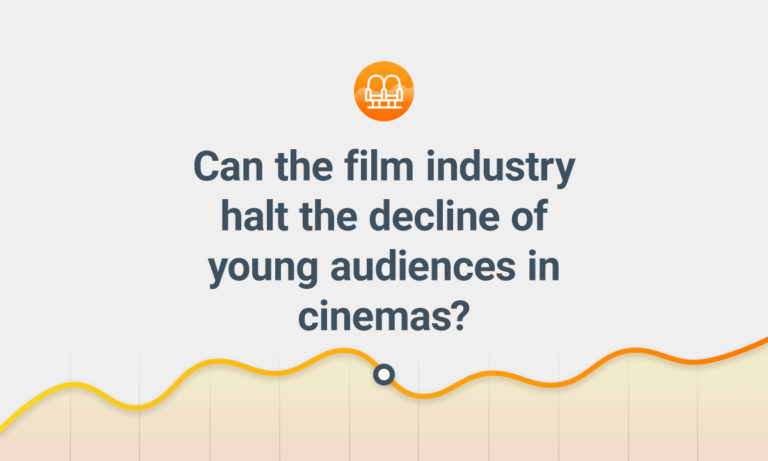
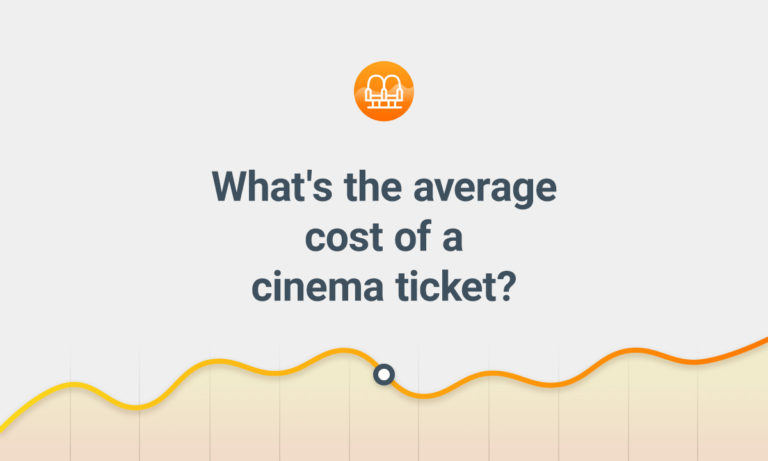
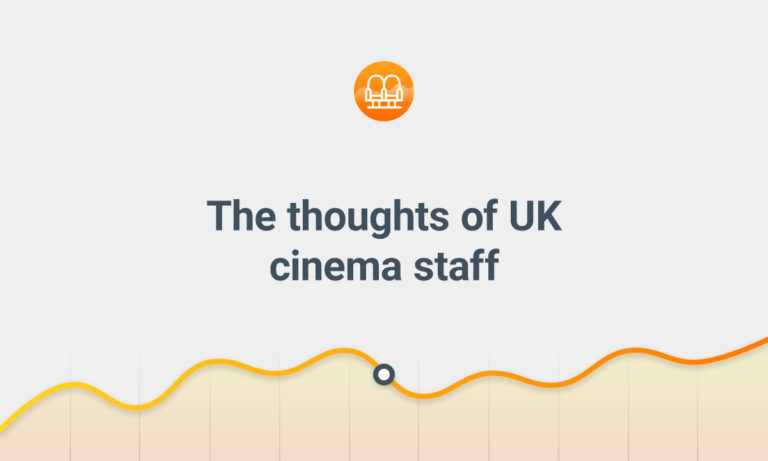

Comments
Hi! I’m doing a statistics project on horror films and class, I was wondering if you could email me about accessing the raw data you used to produce these charts? Thank you so much.
This is very helpful.